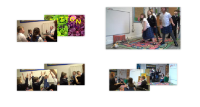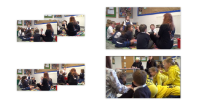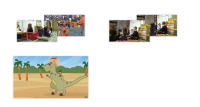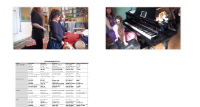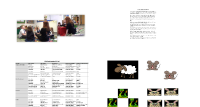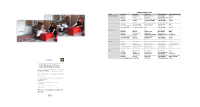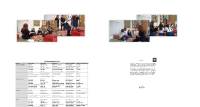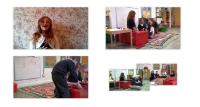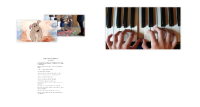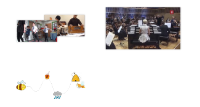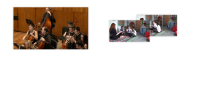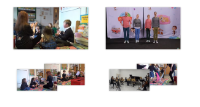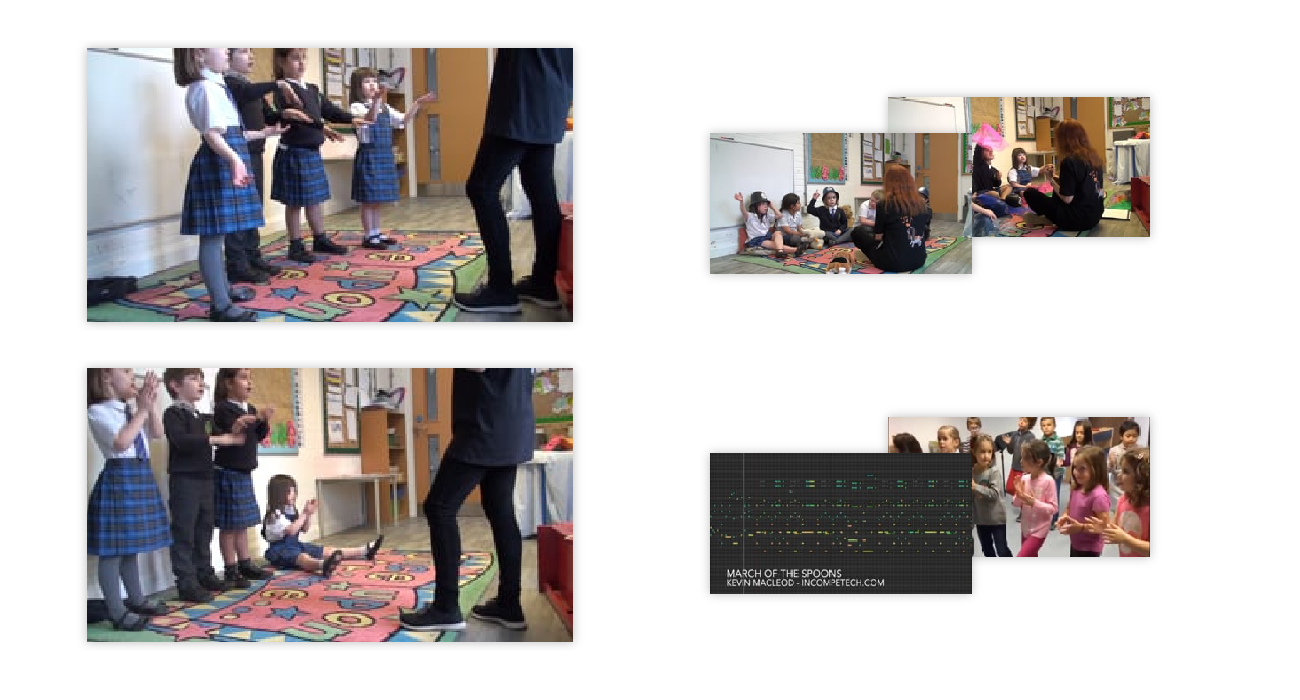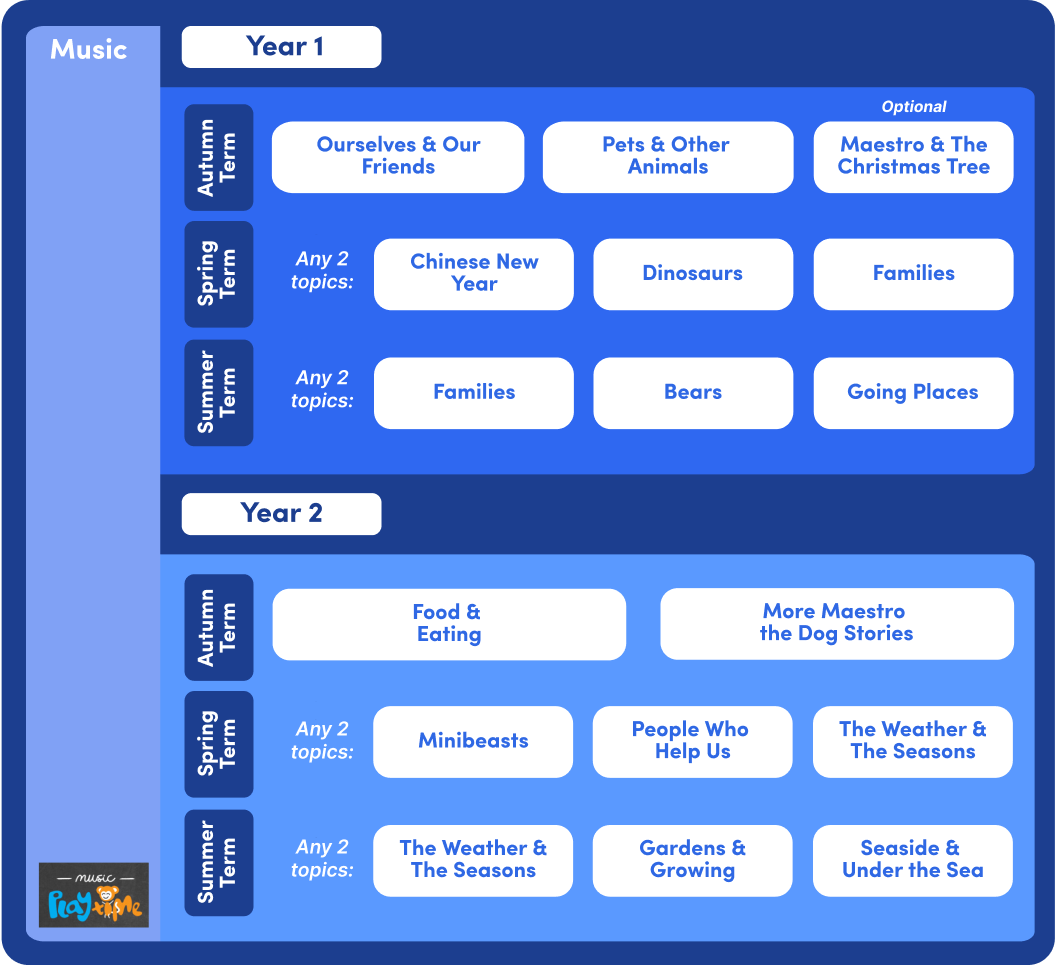People Who Help Us Level: Key Stage 1
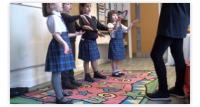
Lots of People Help Us (pitch, pulse)
This is an easy starter song that helps the children to think of all the people who help us. You can walk in time to it and also tap the pulse on knees. In the video, the children are encouraged to think of other actions they can do in time with the pulse of the music.
When they know the song, ask the children to think of other people who help us to sing about. These people fit into the song well:
Firefighters, road sweepers, doctors, teachers, caretakers, nurses, dentists, lifeguards, bus drivers, post workers, musicians, hairdressers, opticians, pilots, painters, plumbers.
The rhythm of the word police officer doesn't fit very well because the strong part of the word, pol-ICE is the second syllable.
- Lots of people help us, help us, help us
- Lots of people help us every day
- __
- Firefighters help us, help us, help us
- Firefighters help us every day
- ... and so on
A Road Safety poem (structure, pulse, rhythm)
First make big lollipop shapes in colours red, amber and green to represent traffic light colours. Next teach the poem in a sing-song voice - the words in capital letters are the ones that sound strong when you say them and make it possible to walk in time. Then divide children into groups, with one child per group holding that group's lollipop:
Speakers (can you borrow a crossing patrol lollipop for the speaker group?)
- red lights
- amber lights
- green light
- RED light, RED light, WHAT do you SAY? (speaker)
- I say STOP, and STOP right aWAY (red light group)
- AMBER light, AMBER light, WHAT do you MEAN? (speaker)
- I mean WAIT till the LIGHTS turn GREEN (amber light group)
- GREEN light, GREEN light, WHAT do you SAY? (speaker)
- I say CROSS, but FIRST look each WAY (green light group)
- THANK you, THANK you, RED, amber, GREEN (speaker)
- NOW we KNOW what the TRAFFIC lights MEAN! (everyone)
Extension
Give an untuned percussion instrument to one child in each group, to be played on the children to choose an instrument to play their answer:
- I say STOP, and stop right away = play drum on stop
- I mean WAIT till the lights turn green = play tambourine on wait
- I say CROSS, but first look each way = wood block on cross
At the last line the children all play their instruments together and hold up their lollipops.
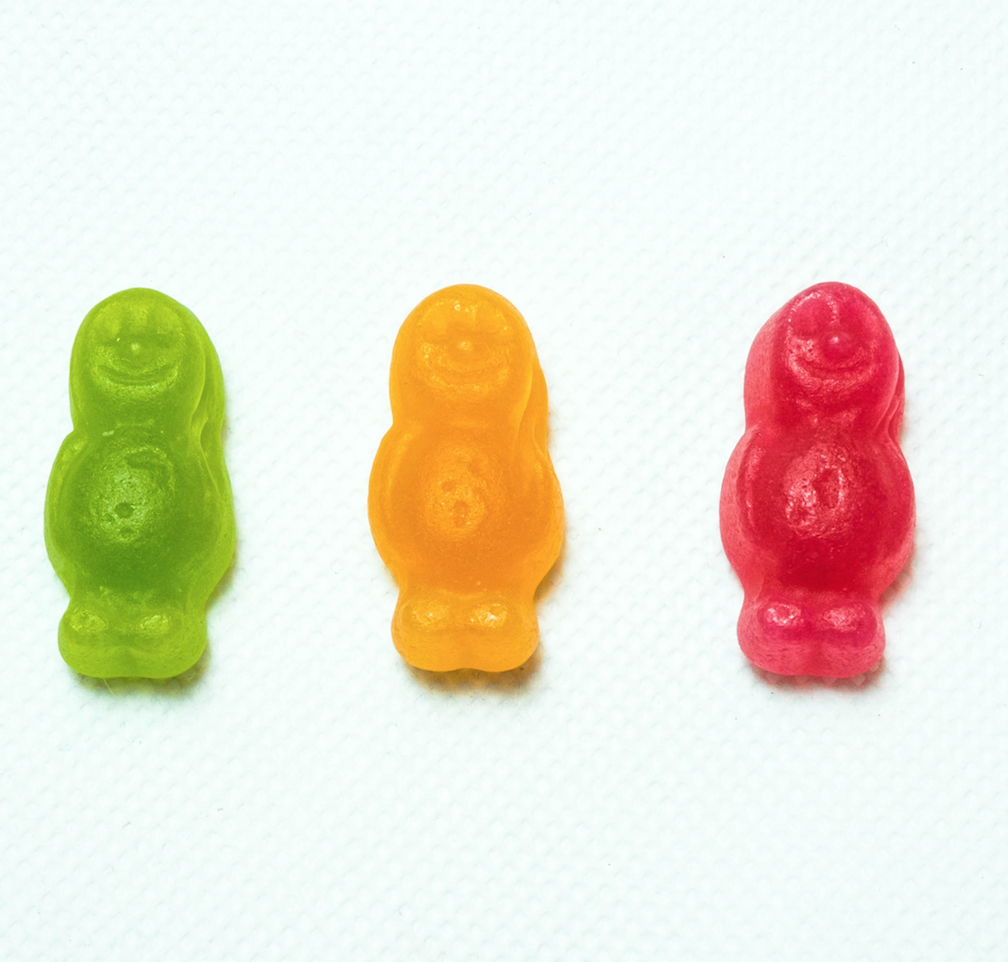
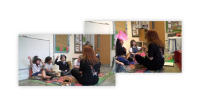
Driving Our Police Car (tempo)
This song has tempo changes and it's also great fun as a stimulus for drama. Here's the first lesson on the song:
In the second lesson I asked Samuel to play the drum and look what happened - the other children spontaneously tapped the pulse on their police helmets!
Tempo Changes
In the third lesson we chose coloured scarves to be the siren going round and round and practised changing tempo for verse 2!
Our Performance of Driving Our Police Car
A performance can be for anyone, even a video camera! You can see what we did with the scarves and we also added a burglar-builder who stole a brick, for a bit of drama. Our tempo changes were great!
- Driving our police car round and round
- Making sure the people are safe in town
- The we get a call, an emergency
- Twenty miles away there's a burglary
- __
- Whooooeeeee! (siren sound)
- __
- On the motorway, on the motorway (sing faster)
- Speeding along on the motorway
- If it starts to rain, we can't drive so fast (sing slower)
- But we'll still catch that burglar at last (sing faster)
- __
- ©Music-Playtime at Arts Enterprise Limited
Be Kind
A song with a character-development message for everyone about how we can be the people who care and help.
- Doesn't matter if you're big or small
- Doesn't matter if you're rich or poor
- You can be anything so make up your mind
- Make up your mind to be helpful and kind
- __
- Let's help our friends and mum and dad
- Let's be kind to animals or they'll be sad
- Be kind to sisters and brothers too
- Then you will find they are kind to you
- __
- ©Music-Playtime at Arts Enterprise Limited
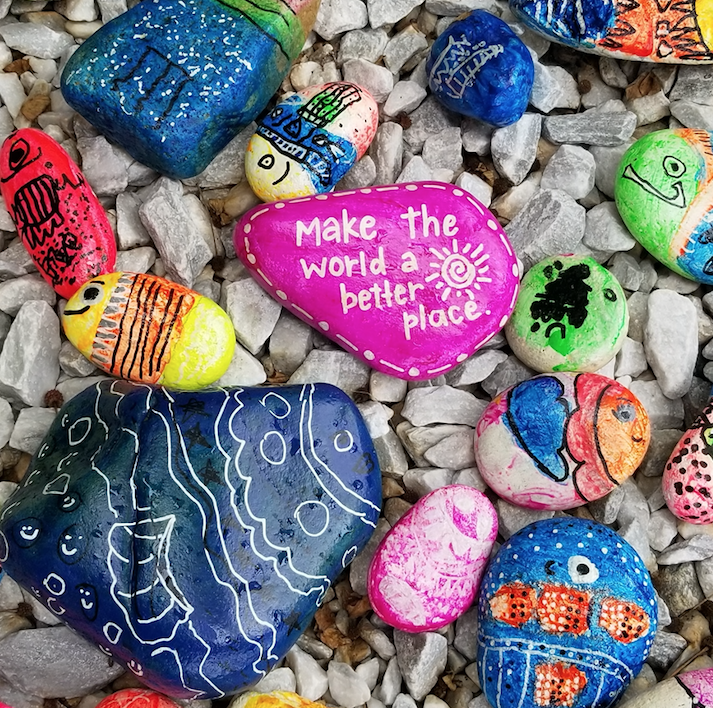
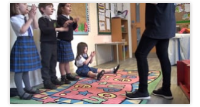
Lots of People Help Us Clapping (rhythm)
Young children love repetition and it's a good idea to come back to familiar songs to practise different skills. In this video, we return to Lots of People Help Us to practise rhythm clapping. I was pleased to hear that the children not only kept a steady pulse but also clapped the rhythm of the words accurately. Remember to use the words, rhythm (sounds like the words) and pulse (stays the same throughout) in context.
Sergeant Sound and Sergeant Symbol (timbre)
Sergeant Sound and Sergeant Symbol are investigating a peculiar crime - the theft of sounds! The police don't yet know how many sounds were stolen but luckily the sound snatchers left a trail of pictures behind ...
First the children are all in Sergeant Sound's police force, in pairs with one instrument between two. Ask them to experiment to each find a way of playing the instrument that makes a different sound or timbre eg tambourine: tap with fingers, shake it). Ask each pair to think of a word to describe the timbre of the two different sounds they made. Give examples yourself first such as bong, ssscccrraaatchch, ting. Next, they each make a picture of how their sounds might look - 'If you could draw your sound, what would it look like?' The children need to write their names on the back of the paper, not the front.
Now the children are in Sergeant Symbol's police force! Working in fours, each pair swaps pictures with a different pair of children. Each child makes their sound in turn and the other pair guesses which picture goes with which sound.
Make Sound & Symbol Music (structure)
In their groups of four, the children decide what order to put their pictures in to make a little piece of music. They are responsible for playing just their own sound, for as long as they decide, in the chosen order. You could introduce them to the word loop by asking them to play their piece several times through in the same way. To end their piece, they could play all the instruments together at the same time, creating a thick texture.

Fire and Rescue Time! (tempo)
The children could work in pairs, with an instrument each, or with found sounds (eg slow scraping on a radiator, fast rustling paper) to create a sequence of slow/fast/slow sounds.
Ask the children to imagine they are firefighters. In their sequence they begin with slow sounds, then they make the noise of a siren, then make fast sounds to represent the firefighters rushing to the fire. They end with slow sounds for when the firefighters drive home after putting the fire out.
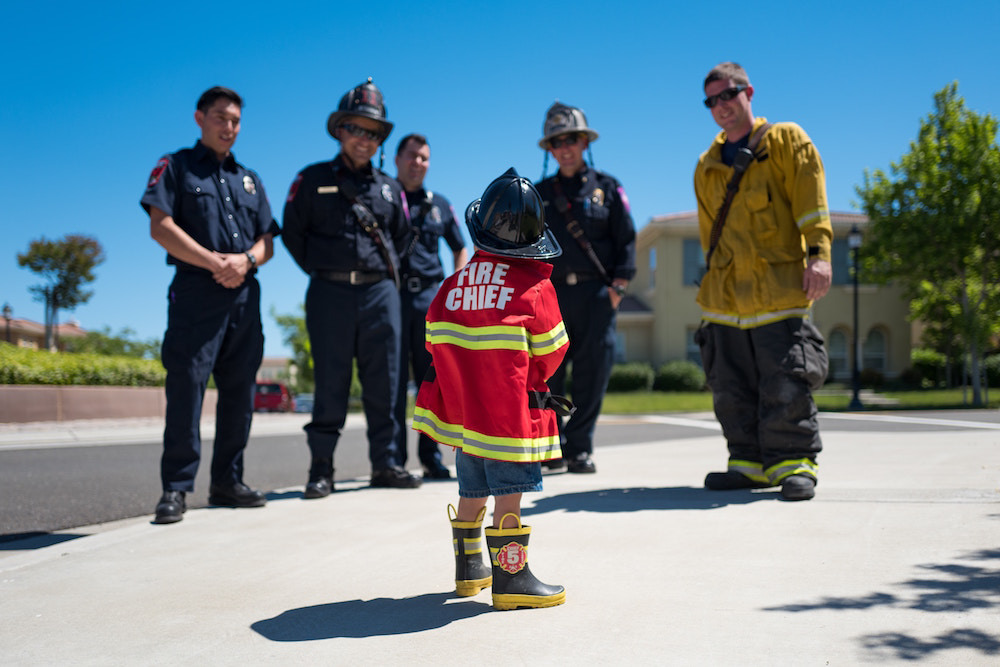
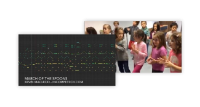
Sounds Funny! (children's choice of elements that contribute to musical character)
How can we make music sound funny? The children could first listen to this piece of music, played on the piano, and put hands up to give their opinion on these points:
- Is it happy, funny or sad music?
- What makes it sound happy, funny or sad?
- Does the character change at any place in the music?
The title is Mr Happy Go Lucky and the music was composed by Sandre. I think most children will agree that it's either happy or funny music but accept any sensible, alternative viewpoints as being valid. Things that might be noticed in this music:
- The short, 'spiky' notes
- The quick tempo
- The change in the middle section to being a bit more serious
- The return to the jolly tune for the last part of the music.
Make Up Funny Music
Here's a chance for the children to make up some silly sounds. Tell them that their mission today is to invent music that makes you laugh. Depending on the children's experience they could ideally work in small groups, choosing and mixing the sounds from any source they wish (instruments, found sounds, body sounds, vocal sounds). It's a challenging task and working in groups has its own demands so supervision is essential, to ensure that no child dominates and no child gets left out.
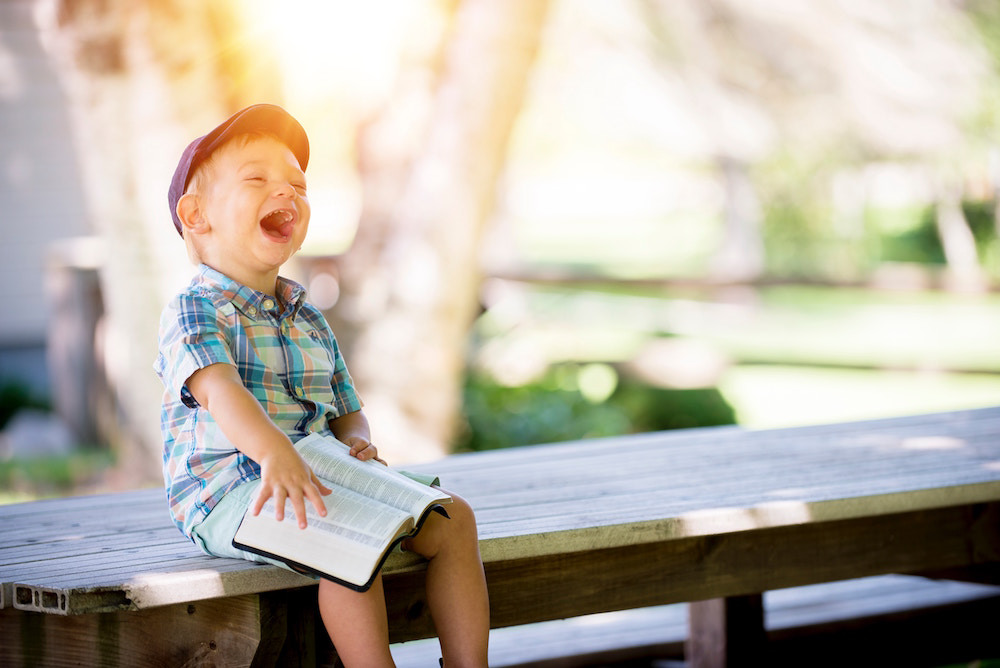
This picture is one of my favourites. It's by Ben White on Unsplash.
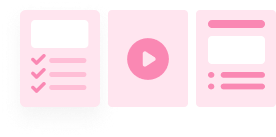
Sounds Funny Again!
Does this music make the children want to do a funny dance? Go ahead!
Body Percussion
Musicians and teachers are helping children to enjoy life here. These children are beginning body percussion in time with the Radetsky March by Johann Strauss which is often played at a big New Year's Day concert in Vienna.
The children here have obviously been practising! You will need to start simple but, once the children have begun body percussion, they will love it and it's a good way to help them to feel and move in time to the pulse. You could use any suitable piece of music that you like and there are loads of suggestions on the Maria Jose Sanchez Parra Youtube channel.

Generation Kind, an RSPCA initiative
The RSPCA has an ongoing education programme about helping animals, with information and fantastic resources for Key Stage 1 children. Find out more here!
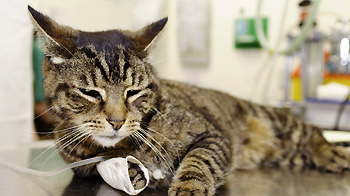
Who Can Help Us?
The children could produce a Who Can Help Us? podcast using Garage Band. The children are all allocated a line to say:
- I need help to cross the road!
- Who can help?
- I can help - I'm a lollipop man!
- I need help!
- I'm lost!
- I can help - I'm a policewoman!
Here are some instructions for creating a podcast using Garage Band. Be aware that, as updates are rolled out, the format may change:
If life feels too short to tackle Garage Band, instead the children could make a big chart on which they write the statements and stick on pictures of the people who can help us.
What If? (PSED and Literacy links)
A poem for thinking about some of the people who help us to get through difficult times.
- What if all the shops were closed
- And had no drinks for us?
- We’d all be hungry and thirsty
- And we'd make a lot of fuss!
- __
- What if there was no internet
- And parcels never came?
- We’d have to ask the online stores
- To open once again.
- __
- What if we had no rescue service
- Then we had a flood?
- We’d all wade through the water
- And go squelching in the mud.
- __
- What if we never thanked our friends
- For help when things get bad?
- They wouldn't want to play again
- And then we would be sad.
- _
- ©Music-Playtime at Arts Enterprise Limited

Teach the Countryside Code
It's never too early to learn how to behave responsibly!
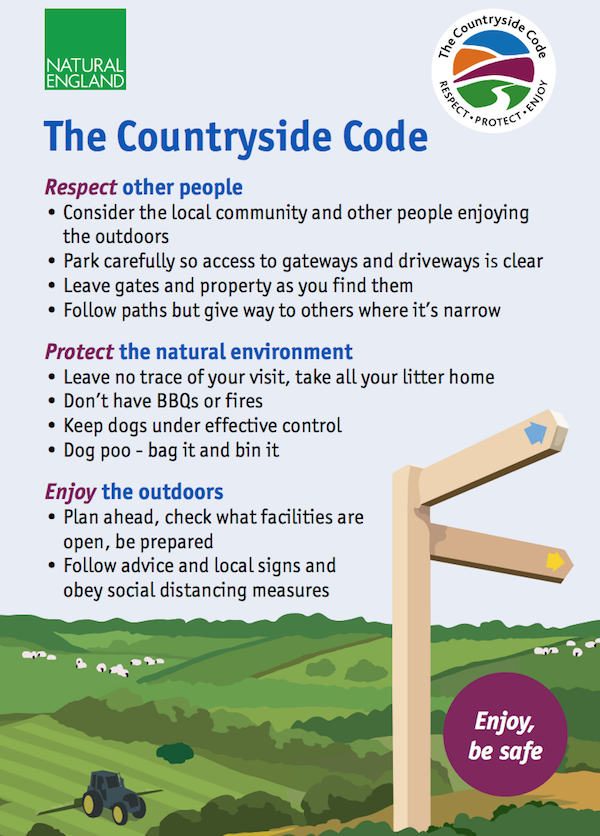

Lots of People Help Us (pitch, pulse)
This is an easy starter song that helps the children to think of all the people who help us. You can walk in time to it and also tap the pulse on knees. In the video, the children are encouraged to think of other actions they can do in time with the pulse of the music.
When they know the song, ask the children to think of other people who help us to sing about. These people fit into the song well:
Firefighters, road sweepers, doctors, teachers, caretakers, nurses, dentists, lifeguards, bus drivers, post workers, musicians, hairdressers, opticians, pilots, painters, plumbers.
The rhythm of the word police officer doesn't fit very well because the strong part of the word, pol-ICE is the second syllable.
- Lots of people help us, help us, help us
- Lots of people help us every day
- __
- Firefighters help us, help us, help us
- Firefighters help us every day
- ... and so on
A Road Safety poem (structure, pulse, rhythm)
First make big lollipop shapes in colours red, amber and green to represent traffic light colours. Next teach the poem in a sing-song voice - the words in capital letters are the ones that sound strong when you say them and make it possible to walk in time. Then divide children into groups, with one child per group holding that group's lollipop:
Speakers (can you borrow a crossing patrol lollipop for the speaker group?)
- red lights
- amber lights
- green light
- RED light, RED light, WHAT do you SAY? (speaker)
- I say STOP, and STOP right aWAY (red light group)
- AMBER light, AMBER light, WHAT do you MEAN? (speaker)
- I mean WAIT till the LIGHTS turn GREEN (amber light group)
- GREEN light, GREEN light, WHAT do you SAY? (speaker)
- I say CROSS, but FIRST look each WAY (green light group)
- THANK you, THANK you, RED, amber, GREEN (speaker)
- NOW we KNOW what the TRAFFIC lights MEAN! (everyone)
Extension
Give an untuned percussion instrument to one child in each group, to be played on the children to choose an instrument to play their answer:
- I say STOP, and stop right away = play drum on stop
- I mean WAIT till the lights turn green = play tambourine on wait
- I say CROSS, but first look each way = wood block on cross
At the last line the children all play their instruments together and hold up their lollipops.


Driving Our Police Car (tempo)
This song has tempo changes and it's also great fun as a stimulus for drama. Here's the first lesson on the song:
In the second lesson I asked Samuel to play the drum and look what happened - the other children spontaneously tapped the pulse on their police helmets!
Tempo Changes
In the third lesson we chose coloured scarves to be the siren going round and round and practised changing tempo for verse 2!
Our Performance of Driving Our Police Car
A performance can be for anyone, even a video camera! You can see what we did with the scarves and we also added a burglar-builder who stole a brick, for a bit of drama. Our tempo changes were great!
- Driving our police car round and round
- Making sure the people are safe in town
- The we get a call, an emergency
- Twenty miles away there's a burglary
- __
- Whooooeeeee! (siren sound)
- __
- On the motorway, on the motorway (sing faster)
- Speeding along on the motorway
- If it starts to rain, we can't drive so fast (sing slower)
- But we'll still catch that burglar at last (sing faster)
- __
- ©Music-Playtime at Arts Enterprise Limited
Be Kind
A song with a character-development message for everyone about how we can be the people who care and help.
- Doesn't matter if you're big or small
- Doesn't matter if you're rich or poor
- You can be anything so make up your mind
- Make up your mind to be helpful and kind
- __
- Let's help our friends and mum and dad
- Let's be kind to animals or they'll be sad
- Be kind to sisters and brothers too
- Then you will find they are kind to you
- __
- ©Music-Playtime at Arts Enterprise Limited


Lots of People Help Us Clapping (rhythm)
Young children love repetition and it's a good idea to come back to familiar songs to practise different skills. In this video, we return to Lots of People Help Us to practise rhythm clapping. I was pleased to hear that the children not only kept a steady pulse but also clapped the rhythm of the words accurately. Remember to use the words, rhythm (sounds like the words) and pulse (stays the same throughout) in context.
Sergeant Sound and Sergeant Symbol (timbre)
Sergeant Sound and Sergeant Symbol are investigating a peculiar crime - the theft of sounds! The police don't yet know how many sounds were stolen but luckily the sound snatchers left a trail of pictures behind ...
First the children are all in Sergeant Sound's police force, in pairs with one instrument between two. Ask them to experiment to each find a way of playing the instrument that makes a different sound or timbre eg tambourine: tap with fingers, shake it). Ask each pair to think of a word to describe the timbre of the two different sounds they made. Give examples yourself first such as bong, ssscccrraaatchch, ting. Next, they each make a picture of how their sounds might look - 'If you could draw your sound, what would it look like?' The children need to write their names on the back of the paper, not the front.
Now the children are in Sergeant Symbol's police force! Working in fours, each pair swaps pictures with a different pair of children. Each child makes their sound in turn and the other pair guesses which picture goes with which sound.
Make Sound & Symbol Music (structure)
In their groups of four, the children decide what order to put their pictures in to make a little piece of music. They are responsible for playing just their own sound, for as long as they decide, in the chosen order. You could introduce them to the word loop by asking them to play their piece several times through in the same way. To end their piece, they could play all the instruments together at the same time, creating a thick texture.

Fire and Rescue Time! (tempo)
The children could work in pairs, with an instrument each, or with found sounds (eg slow scraping on a radiator, fast rustling paper) to create a sequence of slow/fast/slow sounds.
Ask the children to imagine they are firefighters. In their sequence they begin with slow sounds, then they make the noise of a siren, then make fast sounds to represent the firefighters rushing to the fire. They end with slow sounds for when the firefighters drive home after putting the fire out.


Sounds Funny! (children's choice of elements that contribute to musical character)
How can we make music sound funny? The children could first listen to this piece of music, played on the piano, and put hands up to give their opinion on these points:
- Is it happy, funny or sad music?
- What makes it sound happy, funny or sad?
- Does the character change at any place in the music?
The title is Mr Happy Go Lucky and the music was composed by Sandre. I think most children will agree that it's either happy or funny music but accept any sensible, alternative viewpoints as being valid. Things that might be noticed in this music:
- The short, 'spiky' notes
- The quick tempo
- The change in the middle section to being a bit more serious
- The return to the jolly tune for the last part of the music.
Make Up Funny Music
Here's a chance for the children to make up some silly sounds. Tell them that their mission today is to invent music that makes you laugh. Depending on the children's experience they could ideally work in small groups, choosing and mixing the sounds from any source they wish (instruments, found sounds, body sounds, vocal sounds). It's a challenging task and working in groups has its own demands so supervision is essential, to ensure that no child dominates and no child gets left out.

This picture is one of my favourites. It's by Ben White on Unsplash.

Sounds Funny Again!
Does this music make the children want to do a funny dance? Go ahead!
Body Percussion
Musicians and teachers are helping children to enjoy life here. These children are beginning body percussion in time with the Radetsky March by Johann Strauss which is often played at a big New Year's Day concert in Vienna.
The children here have obviously been practising! You will need to start simple but, once the children have begun body percussion, they will love it and it's a good way to help them to feel and move in time to the pulse. You could use any suitable piece of music that you like and there are loads of suggestions on the Maria Jose Sanchez Parra Youtube channel.

Generation Kind, an RSPCA initiative
The RSPCA has an ongoing education programme about helping animals, with information and fantastic resources for Key Stage 1 children. Find out more here!

Who Can Help Us?
The children could produce a Who Can Help Us? podcast using Garage Band. The children are all allocated a line to say:
- I need help to cross the road!
- Who can help?
- I can help - I'm a lollipop man!
- I need help!
- I'm lost!
- I can help - I'm a policewoman!
Here are some instructions for creating a podcast using Garage Band. Be aware that, as updates are rolled out, the format may change:
If life feels too short to tackle Garage Band, instead the children could make a big chart on which they write the statements and stick on pictures of the people who can help us.
What If? (PSED and Literacy links)
A poem for thinking about some of the people who help us to get through difficult times.
- What if all the shops were closed
- And had no drinks for us?
- We’d all be hungry and thirsty
- And we'd make a lot of fuss!
- __
- What if there was no internet
- And parcels never came?
- We’d have to ask the online stores
- To open once again.
- __
- What if we had no rescue service
- Then we had a flood?
- We’d all wade through the water
- And go squelching in the mud.
- __
- What if we never thanked our friends
- For help when things get bad?
- They wouldn't want to play again
- And then we would be sad.
- _
- ©Music-Playtime at Arts Enterprise Limited

Teach the Countryside Code
It's never too early to learn how to behave responsibly!

